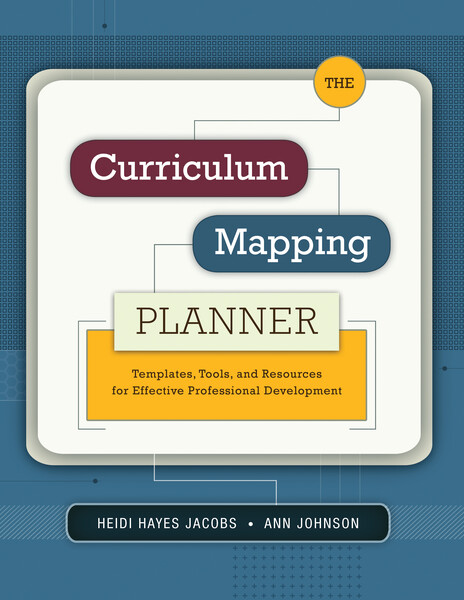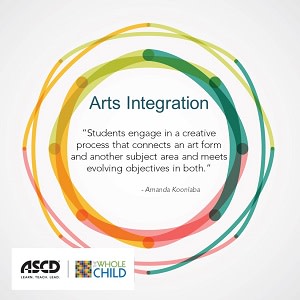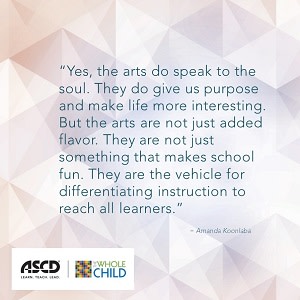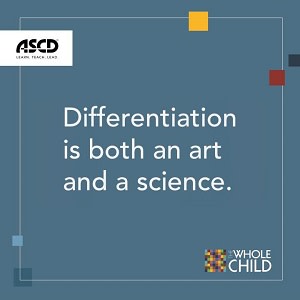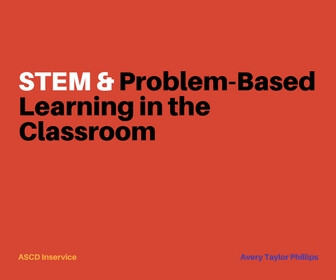What do teachers need from curriculum guides? This question was posed in the September Educational Leadership column, “Among Colleagues.” Five of the 2010 ASCD Annual Conference Scholars got the ball rolling with their answers. What are your thoughts?
Question:
As a curriculum specialist, I’ve learned to begin with the end in mind: What do I want students to understand when teachers have finished instruction? I also have to account for research, standards, scientific evidence, and diverse student needs. With so many priorities to address, the curriculum guide sometimes becomes the “everything bagel”—full of pages of information surrounding each skill. I don’t want teachers to put these guides on the shelf because they don’t have the time or energy to dig into them. What’s the best way for me to provide the materials and lessons teachers and principals need without creating monster guides that no one will use?
—Tracy Broccolino, Manager, Connections Virtual Academy, Baltimore, Md.
Comments:
A good curriculum is more about what gets left out than what gets put in. The greatest curriculum gift I ever received was in my first year as a teacher, when I asked my 8th grade language arts partner, Cheryl, what I was supposed to teach. She replied, “Teach whatever you want. Just make sure they pass the test.” Then she shared some of her units as well as some savvy advice about the skills kids needed to meet the North Carolina standards.
I learned more from that freedom than I ever did from the many overstuffed curriculum binders that came my way. Everyone under the sun wants to tell teachers what to teach and how to teach it. But paint-by-number curriculum guides that specify every lesson from day one to the end of the school year are not the way to grow good teachers.
My advice is to err on the side of Cheryl. Less is more. Give teachers a guide, not an “everything bagel.” You might have a sample unit or two, maybe lots of examples, but stick to the big ideas. What we need is not the perfect curriculum guide, but teachers who are able to take the reins and design their own curriculums to meet the needs of the diverse students they teach.
—Jen Morrison, Teacher Educator, Newberry College, Newberry, S.C.
As a teacher of the gifted and talented, I’ve been writing curriculum for my department for the last five years. During the summer, I freelance as a facilitator, and I was recently hired to present new curriculum enhancements to 275 teachers and instructional specialists for four days. Participants were given a three-ring binder filled to capacity with strategies, lesson plans, learning standards, research articles, and data. As I was showing the attendees how to navigate through the binder, I looked out over a sea of despondent faces and decided that I had to change gears or I would lose their attention and focus. We built the remainder of the session on the question, “What does this look like in my classroom?” By slowing down and learning the teachers’ perspectives, we made the workshop much more useful.
I take two lessons from this workshop experience. First, if we cut to the chase and focus on showing teachers how the curriculum would look in their classrooms, maybe we could chop the first 150 pages out of curriculum guides. Second, the staff development that supports the new curriculum is just as important as the curriculum itself. We have to address teachers’ comfort level with the material. If we can make it happen for them in their minds, they can make the magic happen in their classrooms.
—Michelle Neely, Teacher, Henry B. Gonzales Elementary School, Dallas, Tex.
As a high school English classroom teacher, I sympathize with your dilemma. At times, the amount that we need to cover in one semester seems overwhelming. What’s most important is identifying 5–10 key learnings that students should demonstrate. As you said, you must “begin with the end in mind” and start with these objectives. Once you establish the key learnings, you can group the skills and sample products associated with these learnings under their headings. This focused approach means that beginning teachers can feel in control of the content, intermediate teachers can begin the refine their practice, and expert teachers can go deeper. The curriculum becomes a working document that is much more usable in the classroom.
—Joanne Eliuk, Teacher, Iroquois Ridge High School, Oakville, Ontario, Canada
As a teacher who has had experience in curriculum planning, I’m familiar with your dilemma. When I’m using a teaching guide, I personally find it useful for the objectives and teaching points to be right on top of the page. Important curriculum information should be written in bite-size pieces that teachers can access easily; information that is not essential but good to have should be placed in a section for additional reading.
Jon Saphier’s book The Skillful Teacher recommends that teachers should have some experience in writing and planning the curriculum. Hence, it is in the interest of the school or institution to provide some professional development in this area to help the teachers make more sense of their curriculum guides. By teaching them to fish rather than giving them the fish, you reduce the amount of text needed to explain the curriculum in detail.
—James Han, Teacher, St. Anthony’s Primary School, Singapore
You certainly have hit the “sweet spots” related to the challenges that curriculum developers face in providing vital information without overwhelming teachers. I think your reflection, “I’ve learned to begin with the end in mind,” is a logical place to begin.
It’s important to acknowledge that developing and then delivering a high-quality course is arduous work. Teachers must analyze the course documents, synthesize the information, and vicariously walking through how it will look in practice. This requires time, patience, and the acceptance that there will be occasions in which lesson delivery may not go well right out of the gates.
Curriculum guides should start by distilling the most essential elements from state standards and benchmarks documents, as well as the assessments that have thus far been developed and administered. It’s ideal if teachers can jointly examine these and develop possible lessons to help students meet the curriculum’s goals and benchmarks. Beginning teachers can benefit from working with experienced peers, who can help them with lessons from their lesson bank that have worked well in helping students meet learning targets.
It’s also important that teachers have the guides to help monitor and reflect on all aspects of the course. Keeping notes on what works, what doesn’t, and what tweaks were effective can serve as a vital source of information about the efficacy of the course in meeting the stated goals and thereby set the stage to begin the cycle of continuous improvement.
—Dana Paykos, Supervisor of Curriculum and Instruction, Rancocas Valley Regional High School, Roebling, N.J.



